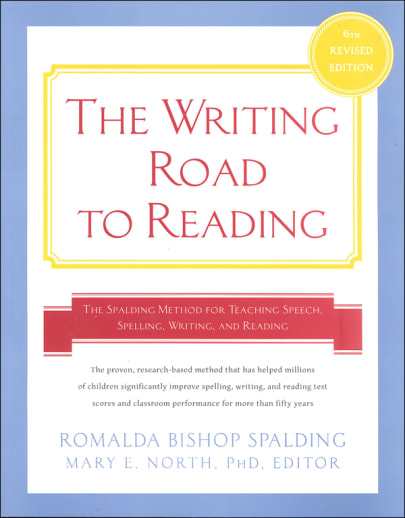Writing Road to Reading 6ED
SKU
008003
ISBN
9780062083937
Grade PK-8
Neutral
High Teacher Involvement
Multi-Sensory
Other Materials Required
Conceptual/Topical
These icons are designed to help you quickly understand and learn important information about our products.
Teaching Method
Traditional
Teacher-centered curriculum commonly used in classrooms that may include a text, teacher manual, tests, etc.
Charlotte Mason
A methodology based on the work of a 19th century educator who maintained that children learn best from literature (Living Books), not textbooks.
Classical
A methodology based on the Latin Trivium (three stages of learning), including the grammar stage (memorization and facts), logic stage (critical thinking), and rhetoric stage (developing/defending ideas).
Unit Study
A thematic or topical approach centered around one topic that integrates multiple subject areas.
Montessori (Discovery)
A methodology based on the work of a 20th century educator that emphasizes student and sensory-driven discovery learning and real-life applications.
Other
Other methodologies
Religious Content
Secular
Contains content contrary to common Christian beliefs (i.e. evolution).
Neutral
Avoids religious or theoretical topics or presents multiple viewpoints without preference.
Christian/Religious
Faith-based or including instructional religious content.
Learning Modality
Auditory
Learns through listening, talking out loud or reading out loud.
Visual
Learns through seeing, prefers written instructions and visual materials.
Kinesthetic/Tactile (Hands-On)
Learns through moving, doing and touching.
Multi-Sensory
Curriculum that employ a variety of activities/components.
Presentation
Sequential
Curriculum progresses through well-defined learning objectives. Emphasizes mastery before moving to the next topic.
Spiral
Topics and concepts are repeated from level to level, adding more depth at each pass and connecting with review.
Conceptual/Topical
Focus is on the “why,” often with a unifying concept as well as specific skills; coverage may be broader.
Teacher Involvement
Low Teacher Involvement
Student-led materials; parent acts as a facilitator.
Medium Teacher Involvement
A mix of teacher-led time and independent student work.
High Teacher Involvement
Teacher-led lessons; may utilize discussions, hands-on activities and working together.
Additional Materials Required
No other materials needed
Everything you need is included.
Other Materials Required
There are additional required resources that are a separate purchase.
Other Materials Optional
There are additional resources mentioned or recommended but are not absolutely necessary.
Consumable
Consumable
Designed to be written in; not reusable.
Non-Consumable
Not designed to be written in; reusable.
Our Price
$28.99 $28.99 $20.50
Rainbow Savings: $8.49
Description
Category Description for The Writing Road to Reading
The Writing Road to Reading is a total language arts program that teaches students to spell, write, and read (in that order). This approach was developed by Romalda Spalding alongside the work done by Orton & Gillingham. The research-based instruction begins by teaching 70 phonograms (letter/minimal sound units). Once these are learned, spelling instruction begins based on a list of words compiled by frequency of use. Children learn 29 spelling rules by example, with the teacher following an exact script. After learning the 70 phonograms and 29 spelling rules, the student has the tools to spell 80% of English words. Children keep a personal spelling book where they will ultimately accumulate a personal list of hundreds of words. The last major tool is a simple word marking system utilizing five conventions (ex. rich, ze ro). In the sixty-plus years this program has been in use, instructors have discovered that students begin reading ("on their own) after learning the first 30 or so phonograms. The revised 6th edition adds additional resources and research notes. The manual includes two parts: Part 1 includes detailed lessons and procedures, while Part 2 includes recommendations for quality children's literature and word lists.
Details
| Product Format: | Softcover Book |
|---|---|
| Grades: | PK-8 |
| Brand: | William Morrow & Company |
| Author: | Romalda Bishop Spalding |
| ISBN: | 9780062083937 |
| Length in Inches: | 11 |
| Width in Inches: | 8.5 |
| Height in Inches: | 0.9375 |
| Weight in Pounds: | 2.4688 |
Videos
Reviews

